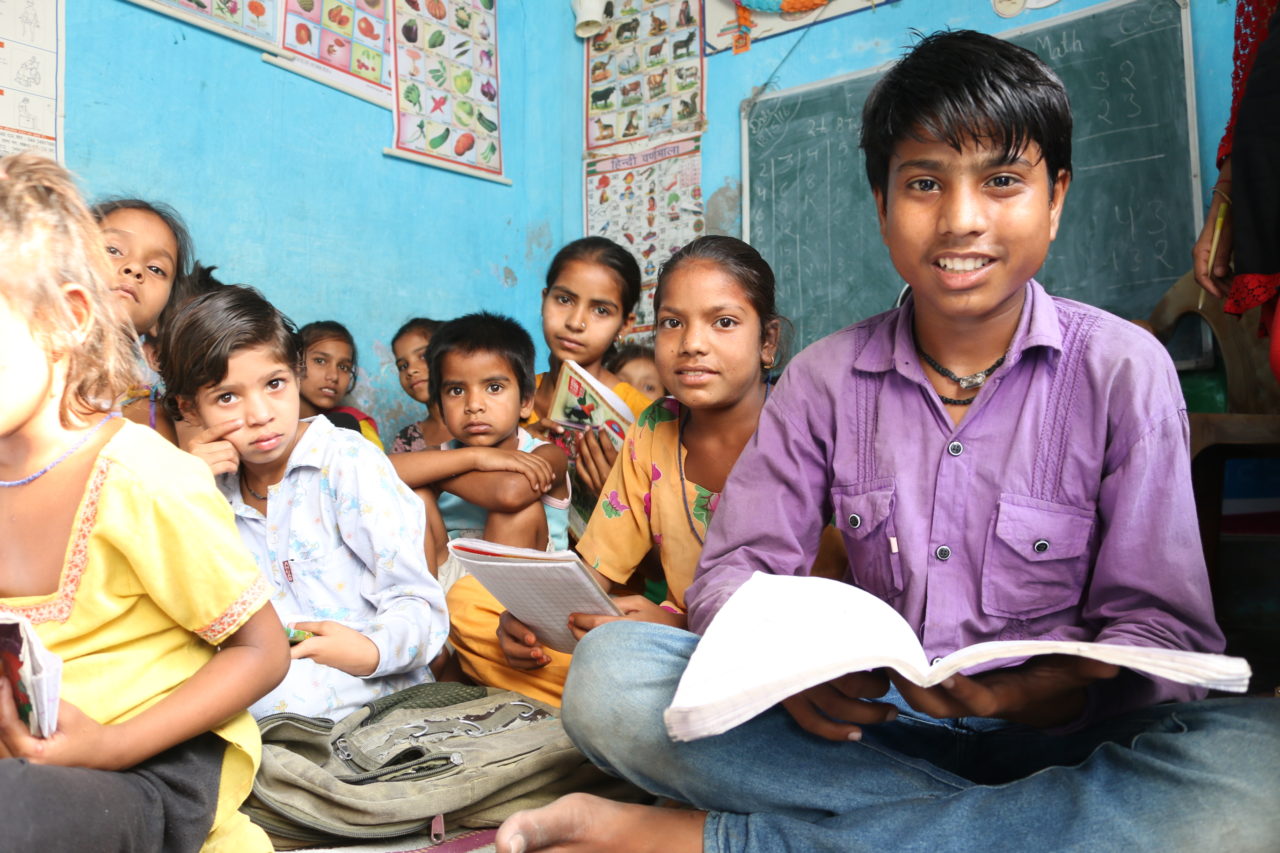From book-binding to book reading, the story of a former child labourer
Thursday, December 1, 2016

Working at a local book-binders in Northern India, 12 year old Mohsin earned just 30 cents a day. International Day for the Abolition of Slavery, December 2, is aimed at helping free children like Mohsin who was once among the world’s estimated 168 million child labourers.
“I was surrounded by books, but I didn’t know what was in them,” Mohsin says. “I wanted to study these books I carried all day.”
Mohsin’s life was to change with the arrival of World Vision’s Child Labour Project in his home city of Meerut in 2013. The project helped children not attending school by creating 14 centres where they get tutoring and learn—for some it’s their only education.
Literacy increased from 19 per cent to 39 per cent, according to World Vision’s Portfolio Manager for Asia, Mr Shirantha Perera.
“While child labour is not always slavery, it becomes harmful when it deprives children of education,” Mr Perera said.
“Children in our Child Care Centres are counselled, and helped to move out of labour. Staff visit families to explain the importance of education. At the centre, they’re also taught the basics of subjects. Once the child is ready, he or she is enrolled in school with support from World Vision.”
Currently, around 5,648 children in Meerut are engaged in child labour, such as football stitching, farming, scissors making, bag and towel making, rope making and artificial jewellery making. The Child Labour Project focuses on education, specifically primary education, to take the youngest children out of child labour.
“The project believes that the earlier intervention the deeper the impact on a child's life,” Mr Perera said.
The project has transformed Mohsin’s life. Once, he was so tired, all he could do was sleep after his long days. Now the boy who yearned to read the books he handled each day is able to do just that.
“I love my school books,” Mohsin said. “I like studying English the most. I enjoy math and Hindi too.”
Mohsin attends the centre after school, and has time to play cricket with his friends. Healthier and happier, he now dreams of the future.
“When I grow up, I want to be a police officer,” Mohsin said. “I want to run fast and catch all the thieves, but I want to finish studying first. Without going to school, I will not become a good police officer.”
Mohsin’s father, an asthma sufferer, is too ill to work. His mother, Kanij, works odd jobs to support the eight members of her family and appreciated Mohsin’s income. This is common in India, where 3.25 million children aged 5 to 14 work.
So that low income won’t become an obstacle to child education, World Vision provides livelihood assistance to families through Economic Development Assistance (EDA) by providing sewing machines, buffaloes and other items.
“After World Vision came and spoke to me, I realised that his life could be better through education,” Kanij said. “Mohsin smiles more often now; he is happier. I want a good life for my child; I will never stop his education.”
Enabling access to education for all children can start to turn the tide for child labourers according to World Vision Australia’s Head of Public Policy, Emma Wanchap.
“In a world where more than 10 per cent of the world's children are labourers, many working in dangerous conditions, Australia needs to do more to uphold the agreements it is a party to, like the Convention of the Rights of the Child,” Ms Wanchup said.
”We must protect children from trafficking, modern-day slavery and the worst forms of child labour, which are among some of most grave violations of children’s rights.”
World Vision’s Child Rescue Program helps protect children from slavery, living on the street, trafficking, sexual exploitation, and other harmful situations. To know more, or help rescue a child, please visit World Vision Child Rescue
Media Contact: Leah Swann on 0421 857 591 or leah.swann@worldvission.com.au
Media Releases,
Africa,
Asia and the Pacific,
Middle East, Eastern Europe & Central Asia,
Child Slavery,
Human Rights,
Human trafficking,
International Day for the Abolition of Slavery,
Sexual Abuse
Back to all Results